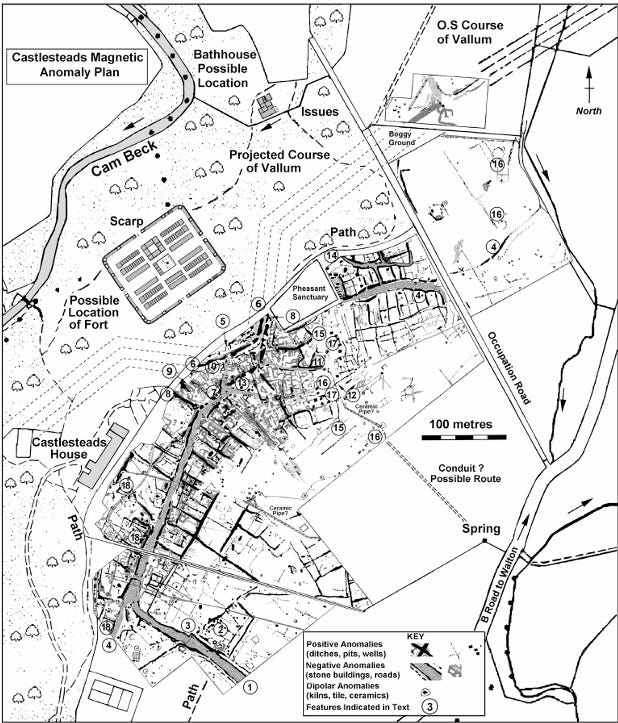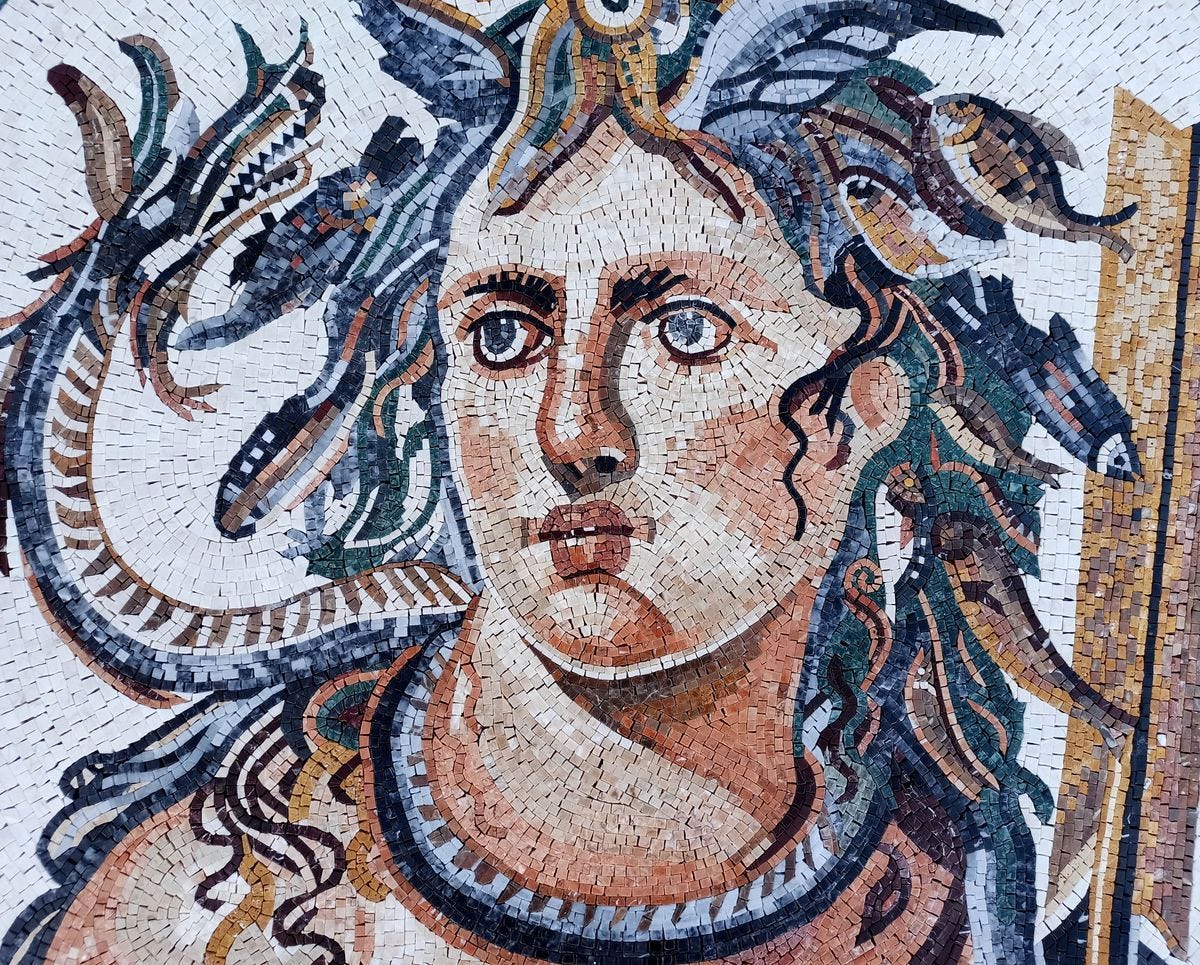La Légende du Roi Arthur
Could an esoteric framework of castles, forts, and battlegrounds in Northern England underpin the true Arthurian legend?
Of the many places associated with King Arthur, Cornish Tintagel or Glastonbury Tor springs to mind. But what these places lack in archaeological evidence is more than compensated for by fiction 1 and the lure of the tourist pound (250,000 visitors pay to enter Tintagel Castle annually.)
Cumbria also has its fair share of sites affiliated with the name Arthur. Some have captured the imagination of the writers but not the tourist boards. The irony is that Cumbria, or to be more authentic, the Kingdom of Rheged, flourishes with Arthurian matter that hangs from an esoteric framework of castles, forts, and battlegrounds.
The Dark Ages
Described as a period of cultural and economic decline after the collapse of the Roman Empire, The Dark Ages enveloped northern Britain for 700 years. But the lights didn’t go out suddenly. Through the murk of the collapsing Romano-British civilization, there was enough light to illuminate the way ahead for the abandoned client kingdoms.
Foul hordes of Picts and Scots, like tawny worms coming forth in the burning heat of noon. Gildas – De Excidio et Conquestu BritanniaeFourth-century Britain had witnessed an upheaval in command to meet these new threats. The 6th Century Monk Gildas warns in his De Excidio et Conquestu Britanniae - ‘On the Ruin and Conquest of Britain’ that ‘Foul hordes of Picts and Scots, like tawny worms coming forth in the burning heat of noon out of the deepest recesses of their holes, hastily land from their curraghs in which they had crossed the Tithican Valley2.’
Tethys was a Titan, daughter of Uranus and Gaia, sister and wife of the Titan Oceanus, and mother of the river gods and the Oceanids. In Greek mythology, Tethys was a Titan, daughter of Uranus and Gaia, wife of Oceanus, mother of the river gods.
In the sixth century came the news of the first great battle fought in the vicinity. At Arthuret on the Border Esk, in the year 573, Rhydderch of Cumbria, a Christian, overcame the pagan Guendoleu.
Angles, Saxons, Jutes and Frisians, now allies of the northern Picts resumed raids against British settlements as far south as York. Forts, citadels, libraries, and churches burned in the onslaught.
The Notia Dignitatum, the official list of ancient Roman civil and military posts records numeri [barbarous troops allied to Rome] and limitanei [low-status troops assigned specifically to frontiers] manning the forts on Hadrian’s Wall. All under the command of a new imperial officer, the Dux Britanniarum ‘Duke of Britain’.
Whereas the early 6th Century Dux Britanniarum Ambrosius Aurelianus was skilled in re-establishing trade with Rome and restoring the rule of law, it was his successor Artorious who took the fight to the enemies of The Britons.
According to Gildas, Artorious led the Britons in twelve victories against the Saxons, Picts & Jutes culminating in the decisive victory of Mount Badon.
Here then we have Artorius, possibly assuming the Brythonic (Welsh) name of Arthur, who may have been the Roman Dux Legionum Lucius Artorius Castus who served with the Legio VI Victrix Valeria in Roman Wall county.
Whoever’s deeds forged the romanticised, gilded hero of later Arthurian legend, we can be confident that the factual element of Dark Age Artorius has a home in northern Britain.
The Battle of Camlan
Today, the imposing Grade 2 listed house of Castlesteads stands at the confluence of two rivers, the Irthing, and the Cam Beck. Viewed from Walton Road just off the A 691, the house presents a tranquil setting framed by mature trees with grazing fields leading to the front door. The extensive woodland to the right of the house hides a walled garden built over the site of the Roman fort Camboglanna [crooked glen].
The earliest known reference to the Battle of Camlann appears in the 10th Century Annales Cambriae, giving the date 537. It mentions Mordred (Medraut), but doesn’t specify that he and Arthur fought on opposite sides: ‘Gueith camlann in qua Arthur et Medraut corruerunt’ - ‘The Strife of Camlann in which Arthur and Medraut perished’.
With a woodland backdrop and foreground swathes of rich pasture, the Grade II-listed Castlesteads House is a picturesque scene of tranquillity. But scratch the surface and we can see a remarkable landscape of roads, buildings and the hurly-burly of civilian life outside a major Roman Fort thanks to Alan Biggins and David Taylor’s magnetic geophysical survey of the civilian settlement outside the fort.
Below the scarp of the Fort, the River Cam makes a number of turns from its natural NE - SW orientation, first SE and then SW, diverted by the outcrop of high ground. The Romans built a weir here and possibly the Fort’s bathhouse. It is the natural feature that gave this place its Roman name, Camboglanna ‘the bank at the bend.’

The Lady of the Lake
Below the escarpment at Castlesteads, the Cam Beck descends west to the River Irthing, before joining the Irish Sea via the River Eden below the high vantage point of Burgh by Sands.
At Aballava 3 ‘The Orchard’, the Hadrianic wall fort at Burgh by Sands, a dedication alter was discovered to the goddess Latis: DEO LATI LVCIVS VRSEI. This translates as an offering made by Lucius Ursius (Ursius from Ursus the bear, the first component of Arthur’s name). In the Ravenna Cosmography, Aballava is also called Avalana.
Latis was originally an Anglo-Celtic Goddess associated with fresh or open water, literally a ‘Lady of the Lake’. Latis can also mean ‘Goddess of the Bog/Pool’, and thus a deity of watery places. Latis can also mean intoxicating drink. A jug, bespeaking her function of pouring drinks, is engraved on the back of the altar found at Birdoswald Fort.
Could then, amongst this esoteric framework of castles and forts in Northern England, during the dimming of the light before the coming of the Dark Age, Artorious who fell at a decisive battle at Camboglanna been brought by boat along the Cam Beck, the River Irthing and the Eden, to rest at the Roman Fort of Avalana on the shores of the Tithican Valley under the auspice of Latis, a Lady of the Water?
The term Arthurian legend encompasses a number of different versions of the tale, but nowadays it mainly refers to Sir Thomas Malory's English work, Le Morte d'Arthur (The Death of Arthur), published by William Caxton in 1485.
Gildas (died 570?) was a British historian of the 6th century. A monk, he founded a monastery in Brittany known after him as St. Gildas de Rhuys. His De excidio et conquestu Britanniae (“The Overthrow and Conquest of Britain”), is one of the few sources for the country’s post-Roman history, and contains the story of the British leader Ambrosius Aurelianus and the defeat of the Saxons at Mons Badonicus.
Aballava or Aballaba (with the modern name of Burgh by Sands) was a Roman fort on Hadrian's Wall. Close to the Solway Firth, its main purpose was to guard the south end of two important Solway fords, the Peat Wath and the Sandwath (read: A Solway Sea-fever)
A Solway Sea-fever
Before Wiltshire, there was Cumbria. A mountainous land bordered by a sea whose waters cracked a wedge from the border and the Solway filled it with silt and sand.






